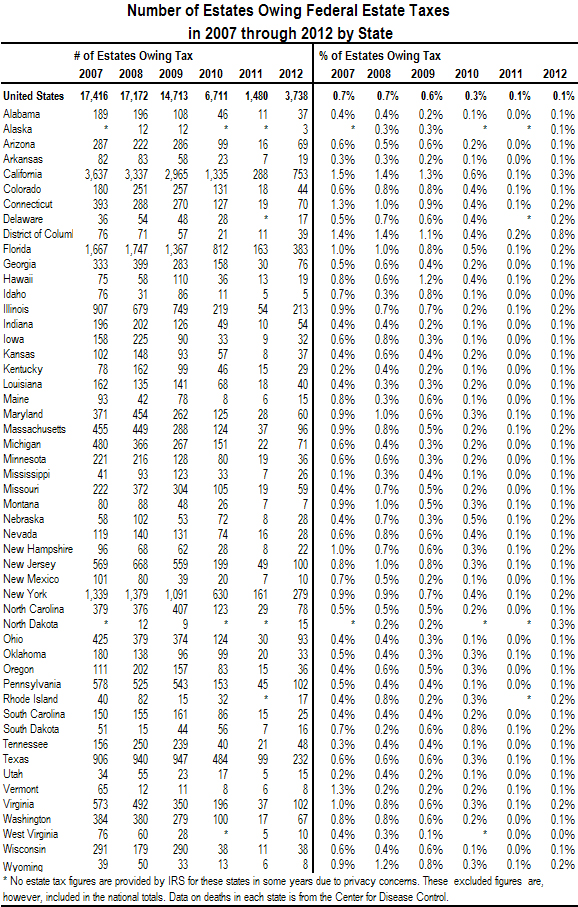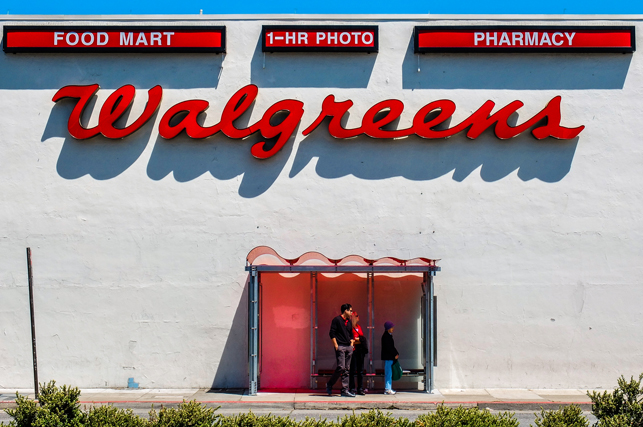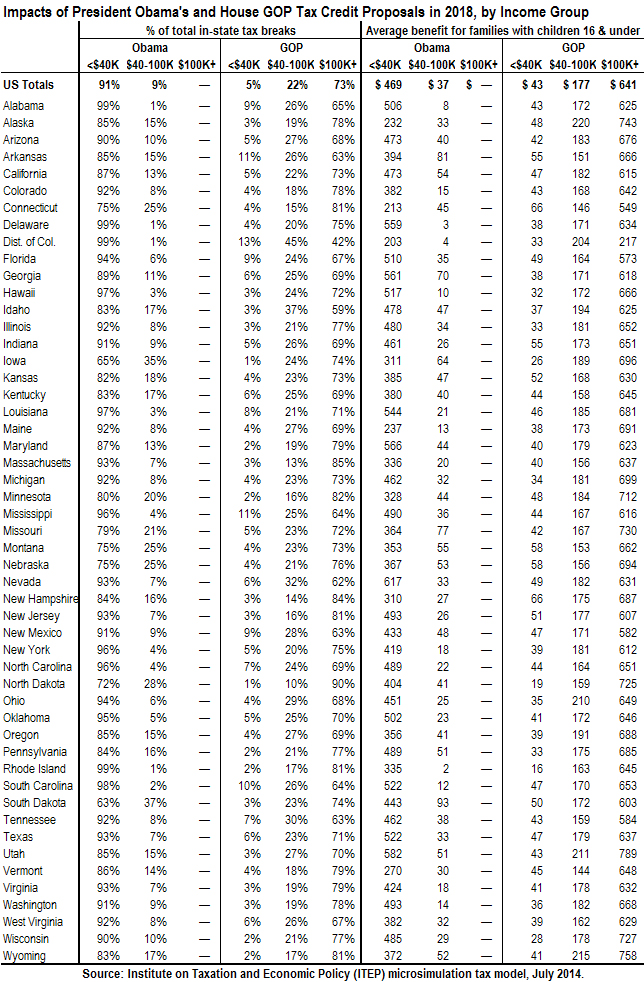August 21, 2014 01:38 PM | Permalink | 
Read this report in PDF.
Several proposals have been offered to address the crisis of American corporations “inverting.” These companies reincorporate as offshore companies to avoid U.S. taxes even as they continue to operate and be managed in the U.S. and benefit from the public investments that American taxpayers support. This report describes these proposals and explains why some are much stronger and more effective than others.
The Basics
The Inversion Crisis Consists of Three Problems which Require Separate Solutions
The inversion crisis actually consists of three related problems which each call for specific solutions. First, loopholes in our tax law allow American corporations to pretend they are based abroad. Second, those corporations claiming to be based abroad (and corporations that really are based abroad) are able to use “earnings stripping” techniques to make profits earned in the U.S. appear to be earned in countries where they will be taxed more lightly or not at all. Third, the profits that American corporations earn offshore are supposed to be taxed by the U.S. when they are brought to the U.S., but after inverting corporations are able to use accounting tricks to escape that rule.
The first problem is simply the absurdity that American corporations can pretend to be foreign corporations, while the second and third problems are the benefits they obtain by doing so. As Edward Kleinbard, former director of the Joint Committee on Taxation (JCT) argues, these benefits, rather than any attempt to enhance “competitiveness,” are the true goals of inversions.[1]
A powerful response would be to address all three problems by taxing “inverted” corporations as American corporations and removing the ability of such companies to earnings strip or access their previously accumulated offshore profits without triggering U.S. taxes.
It is possible that Congress will only address the first problem, by enacting the anti-inversion proposal from President Barack Obama’s recent budget plan and introduced as legislation by Rep. Sander Levin and Senator Carl Levin to tighten the rules around which corporations are treated as American for tax purposes.[2] Or, Congress could instead enact legislation that would address the other two problems — i.e., addressing the motivation for most inversions. The most obvious way to accomplish this would be the enactment of the new legislation that Rep. Sander Levin is reportedly working on to address these problems.
Yet another possibility is that Congress will fail to act and the Obama administration will act on its own to issue regulations authorized under existing law. There is no obvious way that a regulatory change could address the first problem (the loopholes allowing American corporations to pretend to be foreign) but former Treasury official Stephen Shay argues that the administration does have authority to issue regulations that would partially address the other two problems (the motivations for many inversions) which would alleviate the crisis to a large extent.[3] [4]
Loopholes allowing inversions must be closed.
The first problem is that loopholes in our tax law simply allow American corporations to invert. That is, loopholes allow American corporations to pretend, for tax purposes, that they have restructured themselves as foreign companies even though this restructuring exists only on paper. Before 2004, an American corporation might set up a shell corporation in a tax haven like Bermuda and then, as a technical matter, become a subsidiary of that tax haven corporation. Bipartisan legislation enacted in 2004 treats such a company as an American corporation for tax purposes if the former shareholders of the American corporation own more then 80 percent of the newly merged company and there is no substantial business activity in the foreign country.[5]
But American corporations have recently responded by merging with real foreign corporations — albeit smaller ones — to provide the sheen of legitimacy that the 2004 rules require. The arrangements still do not include any actual move of managers or other personnel or any significant change in the business operations, but result in corporations that can pretend to be foreign for tax purposes. The straightforward solution is to treat the company that results from this arrangement as American if the majority of it is owned by the former shareholders of the American company, and to treat is as American if it is managed in the U.S. This is what the Obama-Levin-Levin proposal would do.
Earnings stripping must be stopped.
The second problem is that once a corporation has inverted, it has opportunities to use “earnings stripping” to make profits earned in the U.S. appear to be earned in other countries where they will be taxed more lightly or not at all. In theory, any profits earned in the U.S. are subject to U.S. taxes, whether they are earned by an American-owned company or a foreign-owned company (which an inverted corporation is, technically). But earnings are stripped out of the U.S. when a U.S. corporation (which after inversion is technically the subsidiary of a foreign parent corporation) borrows money from its foreign parent corporation, to which it makes large interest payments that wipe out U.S. income for tax purposes. The loan is really an accounting gimmick, since all the related corporations involved are really one company that is simply shifting money from one part to the other. The interest payments made by the American corporation in effect shift the profits that are really earned in the U.S. to the foreign country for tax purposes.
Restrictions on earnings stripping can take several forms, any of which can be weak or strong depending on how strict the limits are. One approach is to limit the amount of interest that can be deducted for tax purposes to some percentage of income or revenue. Another approach is to limit the deductions to the extent that the American subsidiary’s ratio of debt to equity (loans taken to stock issued) exceeds some set limit. The current (very weak) rule uses these approaches, and some reform proposals would simply lower the percentage of income or revenue that the deductable interest cannot exceed. Another approach would be to limit the interest deductions to the extent that the American subsidiary’s indebtedness is disproportionate relative to the rest of the corporate group (the group of corporations owned by the same foreign parent company). This is the approach taken in the earnings stripping proposal in President Obama’s most recent budget plan, which may be the strongest proposal to stop earnings stripping.
American corporations must not be allowed to avoid the U.S. tax normally due on offshore profits upon repatriation to the U.S.
The third problem is that the profits that American corporations earn offshore are supposed to be taxed by the U.S. when they are officially brought to the U.S. But after inverting, corporations are able to use accounting tricks to escape this rule.
The U.S. theoretically taxes all the profits of American corporations, including the profits earned by offshore subsidiaries. (The U.S. corporate income tax is reduced by whatever corporate income tax has been paid on these profits to foreign governments.) But U.S. corporations are allowed to defer paying U.S. tax until these profits are officially brought to the U.S., which may never happen. As a result, one of the key questions is what will become of the offshore profits that American corporations’ subsidiaries have accumulated offshore (at least officially, since these profits are often in the U.S. in a real economic sense).
In theory, if the U.S. corporation inverts and becomes the subsidiary of a foreign corporation, the profits accumulated by the offshore subsidiaries of the U.S. corporation are still subject to U.S. tax whenever they are repatriated (officially brought to the U.S.) But inverted corporations can easily get around this rule. Money is fungible. The subsidiaries of the U.S. company can loan the money they have accumulated offshore to the foreign company that ostensibly owns the U.S. corporation after inversion, or to another foreign company in the corporate group that is not a subsidiary of the U.S. company. That money can then be used to expand business in the U.S. or buy back stock from the shareholders of the U.S. company. If the offshore accumulated profits of the subsidiaries were directly used for these purposes, that would constitute a repatriation and would trigger U.S. tax. But the inversion allows for the use of loans (as an accounting gimmick) to move the money into the U.S. for that purpose while avoiding the tax.
Proposed solutions generally would enhance the effectiveness of section 956 of the tax code, which is designed to prevent corporations from avoiding the U.S. tax that is due upon repatriation of offshore profits. Before section 956 was enacted in the 1960s, an American corporation could get around the tax by having an offshore subsidiary make an investment in its American operations that was not actually a dividend payment to the American parent company, and thus not considered a taxable repatriation. Section 956 was enacted to treat such investments as repatriations, and to impose U.S. tax at that point. But section 956 applies to investments made by the offshore subsidiaries directly in related American companies. It does not apply when the offshore subsidiaries hopscotch over their American parent company, investing or lending the money to other foreign companies within the corporate group (foreign companies that are not subsidiaries of the American company), which can then use that money for the same purpose without triggering U.S. tax.
Proposals to address this loophole would make section 956 apply when such investments are made by the subsidiaries of the American corporation to other foreign companies in the corporate group in certain situations.
More Details
The Three Problems and Specific Proposals to Address Them
1. Corporations Using Paperwork to Claim to Be Foreign Companies
Problem: Corporations use restructuring that exists only on paper to claim “foreign” status to avoid U.S. taxes.
Solution: Amend the tax laws to refuse to recognize foreign status that exists only on paper.
Proposal: The basic anti-inversion proposal included in President Obama’s most recent budget and then incorporated into the Stop Corporate Inversions Act, provides this solution. The proposal would treat an entity that results from a U.S.-foreign corporate merger as an American corporation if the majority (as opposed to the current threshold of 80 percent) of voting stock is held by the shareholders of the former American corporation. It would also treat the entity resulting from the merger as an American corporation if it is managed and controlled in the U.S. and has significant business activities in the U.S. (Significant business is defined as 25 percent of the corporate group’s employees, payroll, assets or income.)
This proposal would raise $19.5 billion from 2014 through 2014 according to Congress’s official revenue estimator, the Joint Committee on Taxation (JCT).
Some lawmakers have taken issue with the provision concerning inverted corporations managed in the U.S. They claim that this could encourage corporations to literally and physically move their headquarters, including management and supporting personnel, to a foreign country in order to reduce their tax bill. This seems extremely unlikely. So far there is no evidence of any inverting corporations moving managers offshore. In fact, Ireland, where many inverted corporations claim to be based, appears not to be benefiting from the inversion wave precisely because nothing real is actually moving to Ireland, which consequently does not enjoy any revenue or economic gain.[6] In other words, the danger that corporations might respond to a change in the law by moving management offshore is at best speculative, while the danger of corporate inversions causing a loss of revenue is very real and unfolding before our eyes.
Even if there was any reason to fear that some American corporations would do whatever necessary to be considered “foreign,” even if that means moving management abroad, the answer would be to enact additional provisions that remove the incentives a corporation currently obtains by virtue of being foreign (which are discussed in the following sections) and make these provisions apply to all corporations. Under this approach, even if an American corporation was willing to be acquired in a true, economic sense and was willing to move management offshore, there would be little or no incentive to do so because becoming “foreign” would no longer provide significant benefits.
2. Earnings Stripping by Inverted Corporations
Problem: American corporations that invert to claim foreign status often then engage in “earnings stripping,” the practice of multinational corporations earning profits in the United States reducing or eliminating their U.S. profits for tax purposes by making large interest payments to their foreign affiliates.
Solution: Enact tighter limits on debt taken on by the U.S. part of a multinational corporation (tighten restrictions against earnings stripping).
Proposals:
a) Obama’s fiscal 2015 budget plan
The strongest anti-earnings stripping proposal is the one included in President Obama’s most recent budget plan. It would, with good reason, apply to all corporations, not just those that have inverted. It would allow a multinational corporation doing business in the U.S. to take deductions for interest payments to its foreign affiliates only to the extent that the U.S. entity’s share of the interest expenses of the entire corporate group (the entire group of corporations owned by the same parent corporation) is proportionate to its share of the corporate group’s earnings (calculated by adding back interest deductions and certain other deductible items). A corporation doing business in the U.S. could choose instead to be subject to a different rule, limiting deductions for interest payments to ten percent of “adjusted taxable income” (which is taxable income plus several amounts that are usually deducted for tax purposes).
This proposal would raise $41 billion from 2015 through 2024 according to JCT.
b) Rep. Levin’s discussion draft legislation
A different approach is taken by a proposal in legislation being drafted by Rep. Sander Levin, the ranking member of the House Ways and Means Committee.
It would bar the American corporation (which is technically a subsidiary of a foreign company after an inversion) from taking deductions for interest payments to a foreign parent company in excess of 25 percent of its “adjusted taxable income,” which is defined as taxable income plus certain significant deductions that corporations are allowed to take. The current rule (under section 163(j) of the tax code) sets the limit at 50 percent of adjusted taxable income.
This proposal would eliminate the rule that waives that limit if the corporation’s debt does not exceed 150 percent of its equity.
This proposal would also repeal the rule allowing corporations to carry forward any excess limitation (the amount by which the limit on interest deduction exceeds the interest expenses deducted in a given year) to increase their limit in future years.
It would also bar corporations from carrying forward any disallowed interest deductions to more than five years into the future. (The current rules allow disallowed interest payments to be carried forward indefinitely, to be used in any year in which the company has income to deduct from and is not otherwise subject to the limits on interest deductions.)
There is not yet any estimate of the revenue that would be saved under this proposal. It therefore difficult to determine whether it is more effective or less effective than the earnings stripping proposal in the President’s most recent budget plan, which was described above.
c) President Obama’s previous budget plans
The earnings stripping proposal included in the President’s previous budget plans is the template for the proposed change to section 163(j) in Rep. Levin’s discussion draft (described above). But the proposal from the President’s previous budgets was much weaker because it would apply only to companies that are considered inverted under the existing rules, whereas Rep. Levin’s earnings stripping proposal would apply to all corporations.[7]
Limiting this proposal to inverted companies makes it much weaker, as demonstrated by its relatively small estimated revenue impact. This proposal would raise just 2.7 billion from 2014 through 2023 according to JCT, which suggests that it would have little effect.
This should be a warning to lawmakers. If, during the process of legislative negotiations, they are tempted to scale back Rep. Levin’s proposal so that it only applies to inverted corporations (as President Obama had earlier proposed) the policy will likely have very little impact.
d) Camp tax reform plan
The tax reform plan proposed by House Ways and Means chairman Dave Camp also includes an anti-earnings stripping proposal that would amend section 163(j) and is also based on the proposal in President Obama’s older budget plans. Rep. Camp’s proposal is broader in the sense that it would apply to all corporations (not just inverted corporations) but also narrower in the sense that the limits would not be as strict as those proposed by the President.
Rep. Camp’s proposal would bar an American subsidiary company from taking deductions for interest payments to a foreign parent company in excess of 40 percent of its “adjusted taxable income,” which is defined as taxable income plus certain significant deductions that corporations are allowed to take. (As explained, the current rule sets the limit at 50 percent of adjusted taxable income, while President Obama would set it at 25 percent for inverted companies.)
Another difference is that Rep. Camp’s proposal would not change the rule that waives the limit if the corporation’s debt does not exceed 150 percent of its equity.
Like Levin and Obama, Camp would also repeal the current rule allowing corporations to carry forward to future years any excess limitation. But, unlike the other two, Camp would not change the rule allowing disallowed interest payments to be carried forward to be deducted in future years.
In other words, Rep. Camp’s proposal is less strict in these ways, but also applies to all corporations. The result is that Camp’s proposal has roughly the same revenue impact as President Obama’s old proposal. Rep. Camp’s proposal would raise $2.9 billion from 2015 through 2024 according to JCT.
The revenue impact would be somewhat larger than that if this proposal was enacted on its own. The revenue estimate assumes that it is enacted as part of Rep. Camp’s larger tax reform plan, which also gradually reduces the corporate tax rate to 25 percent. Enacting this earnings stripping proposal on its own, without the reduction in the corporate tax rate, would raise somewhat more.
e) Possible administrative action
Former Treasury official Stephen Shay has proposed that if necessary, the Treasury Department could issue regulations under section 385 of the tax code that would limit earnings stripping for inverted corporations.[8] That section of the law essentially allows Treasury to issue regulations to determine whether an interest in a corporation is treated as debt or equity (stock). Regulations could, Shay explains, reclassify excessive debt taken on by an inverted American company from its (ostensible) foreign parent company as equity. This would mean that any interest payments made by the inverted American corporation would be reclassified as dividends paid on stock, which, unlike interest payments made on debt, are not deductable.
There are probably several ways that Treasury could define the excess indebtedness that would be reclassified as equity. Shay proposes that Treasury provide two calculations, and whichever amount is less would apply.
The first would be any debt that exceeds 110 percent of the debt that the inverted U.S. corporation would have if its debt-to-equity ratio was the same as that of the rest of the corporate group (the rest of the group of corporations owned by the same parent company). (This rule borrows from another provision of Camp’s tax reform plan.)
The second would be the amount of debt for which the interest would exceed 25 percent of the American corporation’s adjusted taxable income (again, income plus certain expenses usually deducted) averaged over the previous three years.
There is no estimate of how much revenue this proposal would save.
3. Inverted Corporations Avoiding the U.S. Tax Due on Accumulated Offshore Profits Upon Repatriation to the U.S.
Problem: Inverted corporations are able to avoid the rule that requires U.S. taxation when an American company repatriates (officially brings to the U.S.) profits of its offshore subsidiaries.
Solution: Strengthen section 956 of the tax code, the provision that is designed to prevent corporations from circumventing the rule that requires U.S. tax paid on offshore subsidiary profits when they are repatriated.
Proposals:
a) Rep. Levin’s discussion draft legislation
Rep. Levin’s discussion draft legislation would strengthen section 956 to impose U.S. tax on certain investments made by offshore subsidiaries of the American company to its ostensible foreign parent company or to other companies within the corporate group when such investments are really ways to indirectly move offshore profits into the U.S. without technically making a taxable repatriation.
Section 956 currently applies when the offshore subsidiaries of an American company invest directly in the U.S. company in some way that is really a repatriation of offshore profits by another name. For example, the offshore subsidiary could lend money to, or guarantee a loan to, its American parent company in a way that has the same effect as paying a dividend to the American parent company. Section 956 treats such investments as repatriation and imposes U.S. tax on them. The reform proposed by Levin would do the same when the investment is done indirectly, routed through a foreign parent company after an inversion or through one of the other companies that is owned by the foreign parent company.
There is currently no revenue estimate for this proposal.
The arcane nature of this reform belies the significance of the problem it addresses. American corporations officially hold, through their offshore subsidiaries, $2 trillion in foreign profits that they have declared to be “permanently reinvested” abroad. In many cases, these profits are really earned in the U.S. or another country with a normal tax system but manipulated through accounting gimmicks to appear to be earned in countries like Bermuda or the Cayman Islands that do not tax corporate profits. Almost none of these profits can be described as “earned,” in a real economic sense, in these tax haven countries, which do not provide nearly enough business opportunities to justify the amount of profits reported there.[9]
In fact, several corporations have acknowledged that if they repatriate these offshore profits, they would pay almost the full U.S. tax rate of 35 percent on them, which indicates that a large portion of these profits have not been taxed by any government, a clear sign that they are largely reported in tax havens.[10]
These corporations would like to access their offshore subsidiaries’ profits (to increase domestic investment or, more likely, to enrich shareholders with dividends or stock buybacks). This would be considered a repatriation of offshore profits, and U.S. taxes would come due — at or near the full 35 percent rate when tax haven profits are repatriated. Naturally, the corporations would like to avoid this tax. Allowing them to do so would essentially reward their offshore tax avoidance.
Section 956 as currently written blocks American corporations from getting around the U.S. tax that is due upon repatriation, but fails when these companies invert and become part of foreign-controlled corporate group. Rep. Levin’s proposal would address this problem.
b) Possible administrative action
Former Treasury official Stephen Shay has argued that this problem (along with earnings stripping) can be resolved through administrative action if Congress fails to act. He cites several sections of the tax code, including 956(e) which says the “Secretary shall prescribe such regulations as may be necessary to carry out the purposes of this section, including regulations to prevent the avoidance of the provisions of this section through reorganizations or otherwise.” The mergers that corporations use in inversions to claim to be restructured as foreign companies would seem to be such “reorganizations.”
Another section of the law cited by Shay is even more straightforward in providing this authority to the President. Section 7701(1), provides that the “Secretary may prescribe regulations recharacterizing any multiple-party financing transaction as a transaction directly among any 2 or more of such parties where the Secretary determines that such recharacterization is appropriate to prevent avoidance of any tax imposed by this title.”
The techniques used by inverted companies to access their offshore cash (having their offshore subsidiaries lend to or guarantee loans to a foreign parent company or one of its foreign subsidiaries which then finances the American company) would seem to be the sort of “multiple-party financing transaction” mentioned in the provision quoted above.
There is currently no revenue estimate for this proposal.
Shay cites other provisions that seem to grant such authority, so that the question left is not a legal one but a political one. If Congress fails to act and the administration addresses the crisis with regulations, there is no doubt that some members of Congress will accuse it of overstepping its authority, even if that is factually not true. Does the administration have the will to act despite that inevitable backlash? A lot may depend on how that question is answered.
[1] Edward D. Kleinbard, “’Competitiveness’ Has Nothing to Do with It,” August 5, 2014. http://papers.ssrn.com/sol3/papers.cfm?abstract_id=2476453
[2] H.R. 4679, “Stop Corporate Inversions Act of 2014.” http://democrats.waysandmeans.house.gov/bill/hr4679-stop-corporate-inversions-act-2014
[3] Stephen E. Shay, “Mr. Secretary, Take the Tax Juice Out of Corporate Inversions,” Tax Notes, July 28, 2014.
[4] Other prominent tax law experts agree with Shay that current law allows the Treasury Department to do this. See Victor Fleischer, “How Obama Can Stop Corporate Expatriations, for Now,” New York Times, August 7, 2014. http://dealbook.nytimes.com/2014/08/07/how-obama-can-stop-corporate-expatriations-for-now/?_php=true&_type=blogs&_r=0; Steven Rosenthal, “Can Obama Slow Corporate Inversions? Yes He Can,” August 15, 2014. Tax Vox, Tax Policy Center. http://taxvox.taxpolicycenter.org/2014/08/15/can-obama-slow-corporate-inversions-yes-can/
[5] I.R.C. sec. 7874.
[6] Maureen Farrell, “Ireland: U.S. Tax Inversions Aren’t Helping Us Much Either,” Wall Street Journal, July 8, 2014. http://blogs.wsj.com/moneybeat/2014/07/08/ireland-u-s-tax-inversions-arent-helping-us-much-either/
[7] One additional difference is relatively minor: The proposal from the President’s previous budget plans would allow companies to carry forward disallowed interest expenses for ten years, as opposed to the five year limit proposed in Rep. Levin’s discussion draft.
[8] Stephen E. Shay, “Mr. Secretary, Take the Tax Juice Out of Corporate Inversions,” Tax Notes, July 28, 2014.
[9] Citizens for Tax Justice, “American Corporations Tell IRS the Majority of Their Offshore Profits Are in 12 Tax Havens,” May 27, 2014. http://ctj.org/ctjreports/2014/05/american_corporations_tell_irs_the_majority_of_their_offshore_profits_are_in_12_tax_havens.php
[10] Citizens for Tax Justice, “Dozens of Companies Admit Using Tax Havens,” May 19, 2014. http://ctj.org/ctjreports/2014/05/dozens_of_companies_admit_using_tax_havens.php
![]()








 “Reports are stating that Walgreen Co. has decided to set aside — for now — plans to avoid U.S. taxes by reincorporating as a foreign company. Only the proverbial fly on the boardroom wall truly knows what led the company to reach this decision. But a single company backing off plans to exploit loopholes in our tax code to dodge U.S. taxes does not fix the fundamental problem.
“Reports are stating that Walgreen Co. has decided to set aside — for now — plans to avoid U.S. taxes by reincorporating as a foreign company. Only the proverbial fly on the boardroom wall truly knows what led the company to reach this decision. But a single company backing off plans to exploit loopholes in our tax code to dodge U.S. taxes does not fix the fundamental problem.
